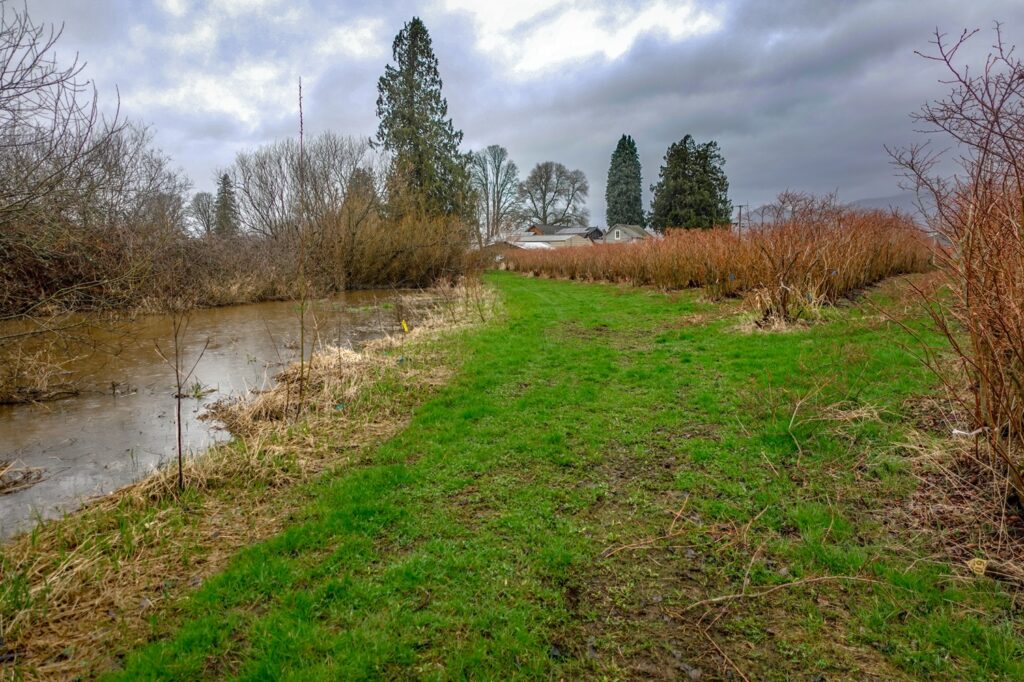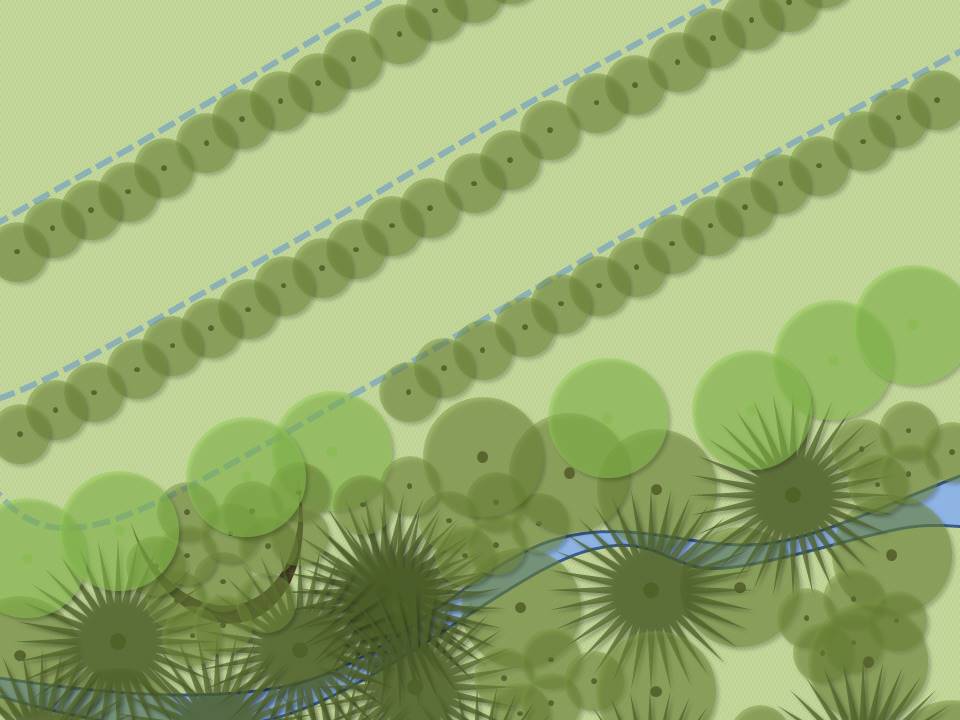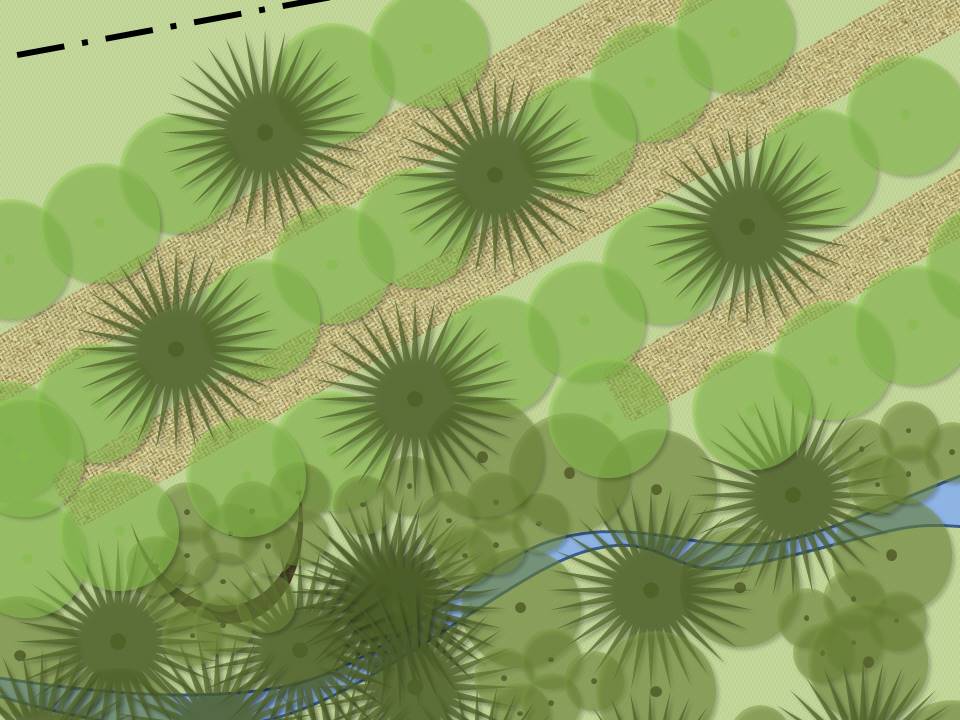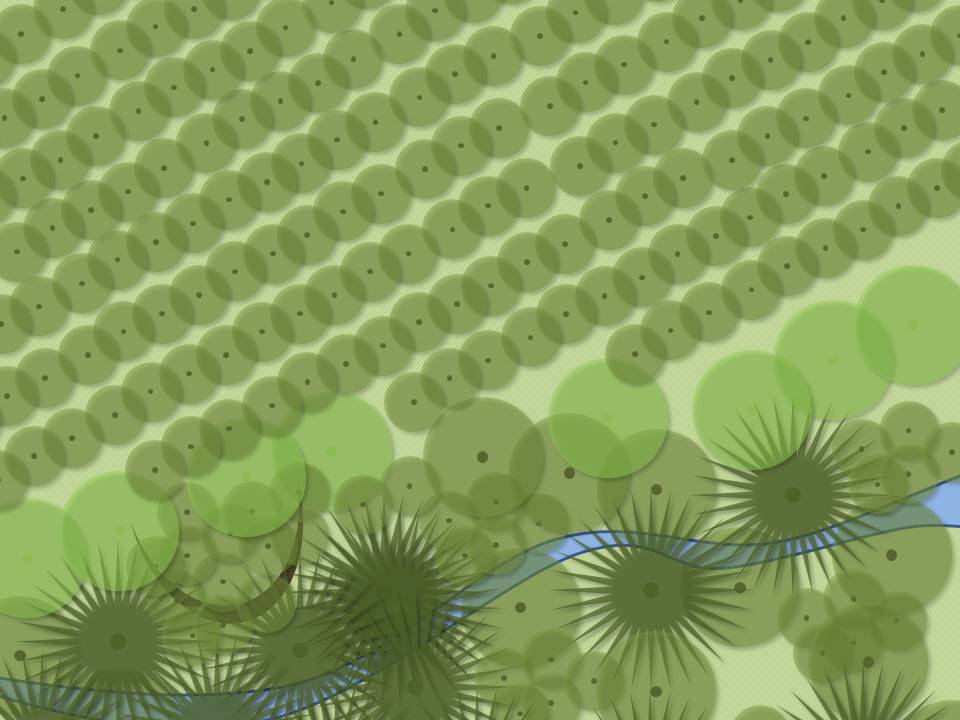Agroforesty
Planting trees to grow better food.
Agroforestry is the best of both worlds. This sustainable land practice combines forest plants with crops and livestock, either simultaneously or sequentially, on the same plot of land to increase the harvest and environmental benefits.
Benefits of Agroforestry...
- Economic production & environmental protection
- Increases production & profitability potential
- Builds resilience to extreme weather events such as floods & drought
- Provides diversity & flexibility in a production system
- Increases wildlife & beneficial insect habitat
- More sustainable compared to other farming practices
- Carbon sequestration

Wet Feet Farming uses agroforestry practices in wet areas were traditional farming is no longer as effective. Rather than draining a field, an agroforestry system of wet-tolerant, high-value perennial crops can address emerging challenges and allow for the holding of valuable water in the soil for longer, dryer summers.
Types of Working Buffers

Where trees are grown in rows that are wide enough to also allow for crops. Stacking these two production systems will help you better cope with market fluctuations or crop failures. This can be a long-term management strategy or a short-term approach to increasing your harvest while growing a forest canopy.

Silvopasture is the practice of grazing livestock under trees with the goal of integrating the management of three components: tree crops, livestock, and forage. Trees are selected for their crop value (such as fruit, timber and/or nut trees) or for additional forage benefits. By combining the three components of silvopasture, a synergistic system is created that allows for all components to be more productive together than they would otherwise be.

This method is the closest to a traditional forest. You have the opportunity to diversify your harvest with both a tree crop and an understory crop. From the trees, you can get timber or fruit and nuts, while the understory is planted with shade-tolerant medicinal herbs, mushrooms, or greens for the floral market.

Fast-growing woody shrub or tree species can be grown densely and harvested in this technique. For best results, you can use species that can re-sprout from stumps or roots. On the landscape, these dense shrubs can absorb nutrients and filter out pollutants. A great partner to traditional riparian buffers!
